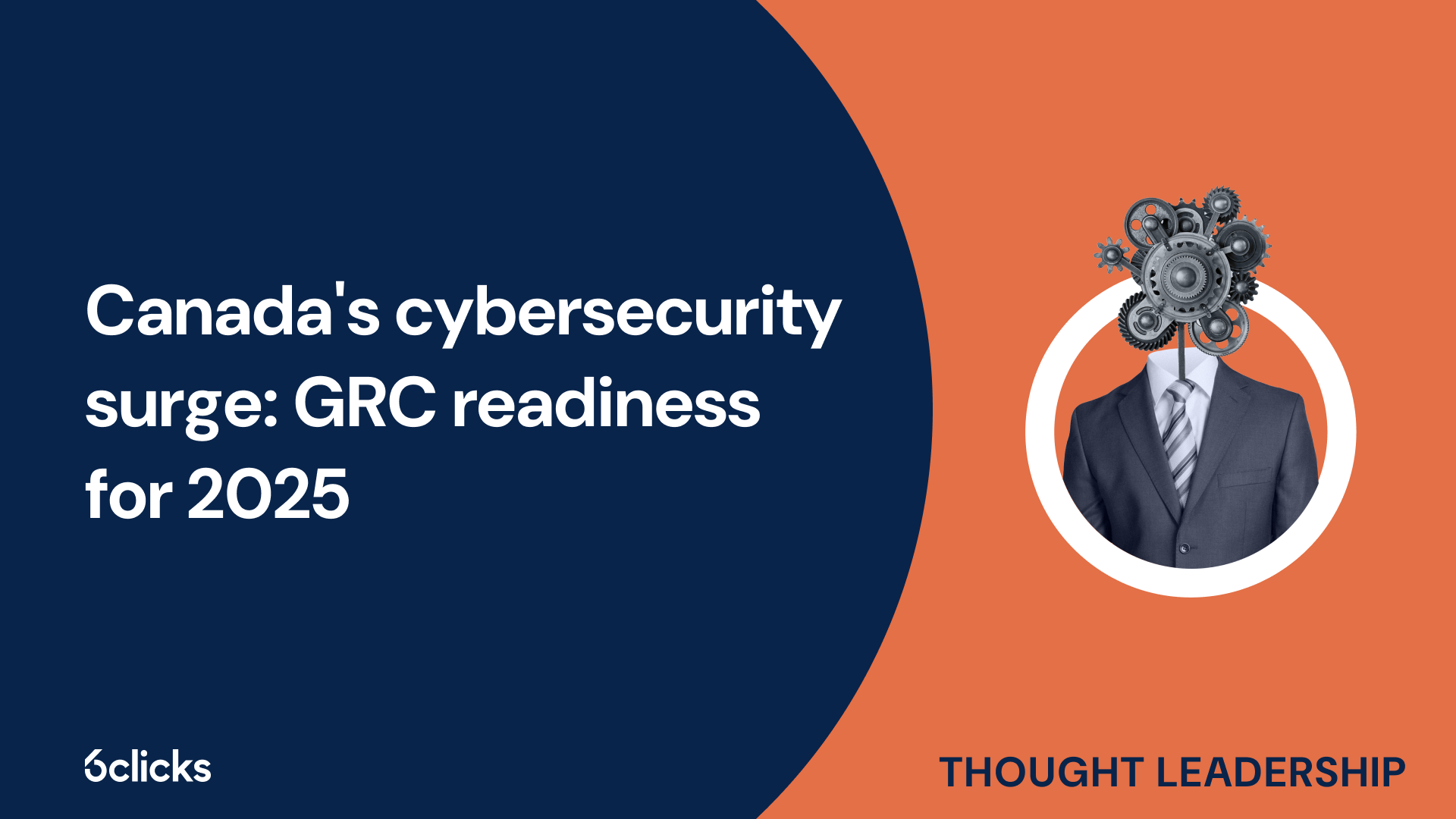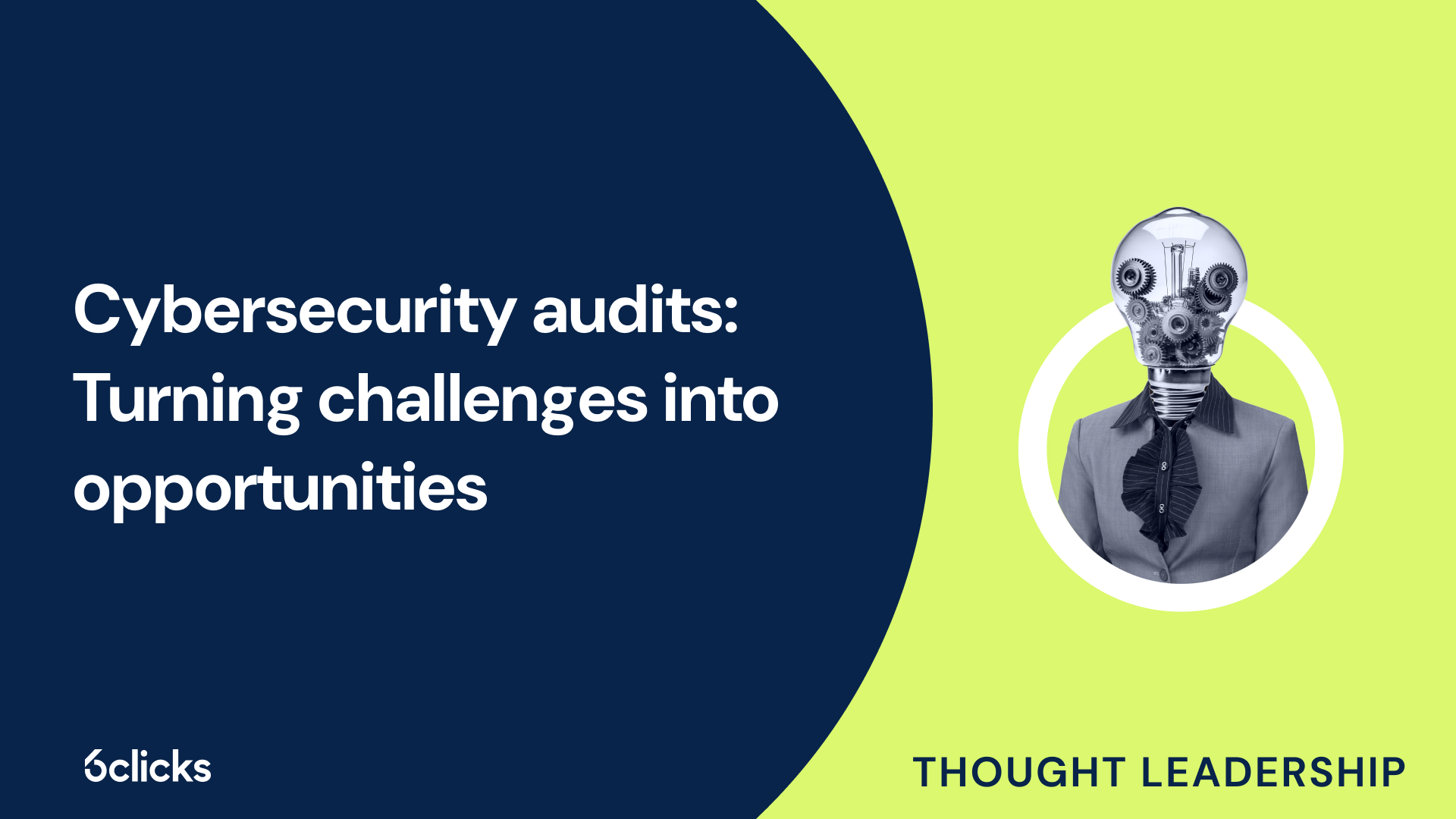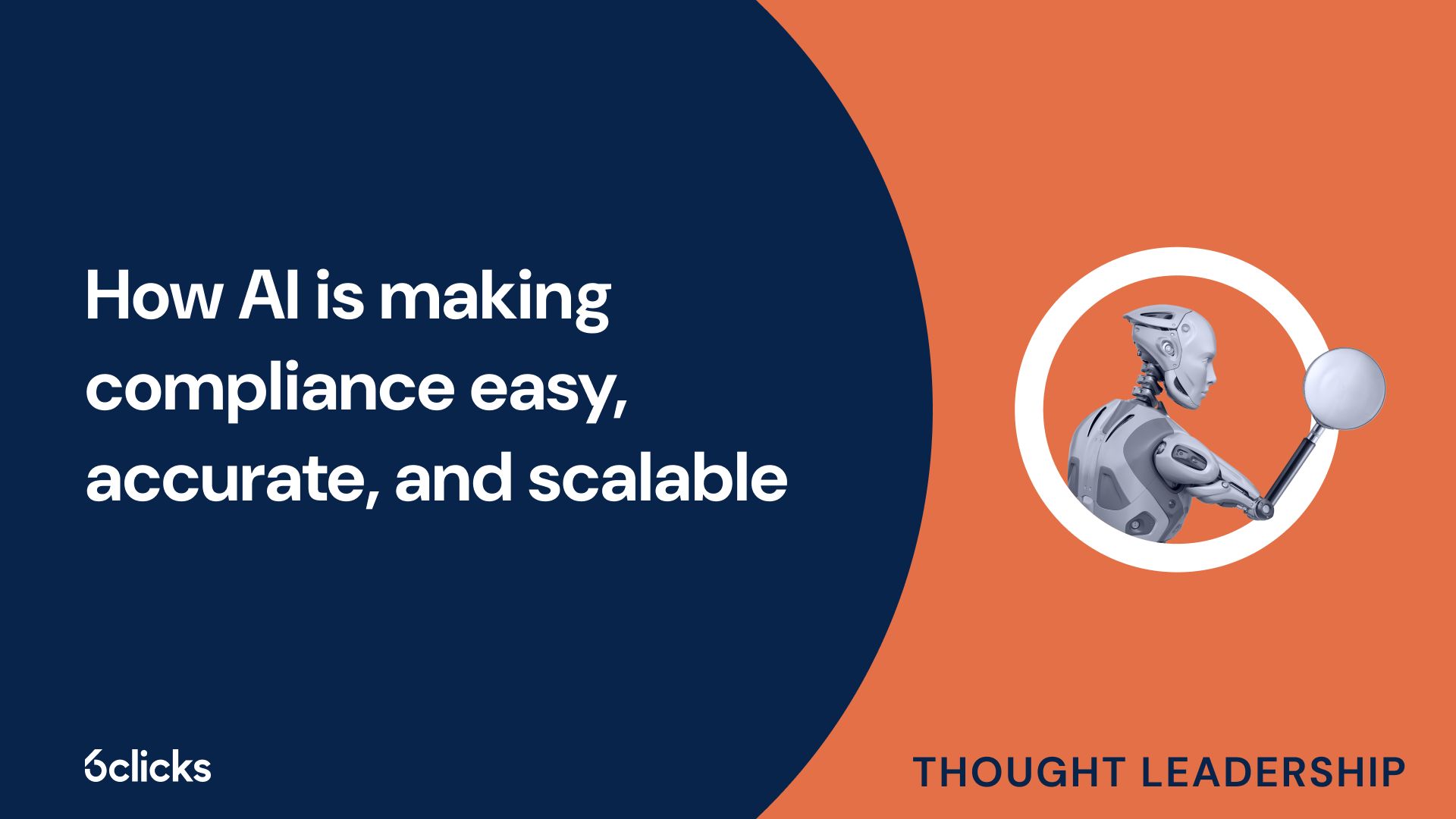Cyber resilience in 2025: Your smart guide to NIST CSF
Boost your organization's cyber resilience with this expert guide to the NIST Cybersecurity Framework. Learn to assess risk, improve security posture, and automate compliance with AI-powered tools.
-1.png?width=200&height=249&name=Group%20193%20(1)-1.png)
Cyber resilience in 2025: Your smart guide to NIST CSF
What is NIST?
The National Institute of Standards and Technology (NIST) is a United States government agency that develops and promotes measurement standards, technology, and innovation to enhance economic security and quality of life. NIST provides guidelines, standards, and best practices in various areas, including cybersecurity. The NIST Cybersecurity Framework (CSF) is a voluntary framework that helps organizations manage and mitigate cybersecurity risks. It provides a set of security controls, implementation tiers, and a risk assessment process to help organizations develop and maintain a robust cybersecurity program. Many federal agencies and organizations worldwide rely on the NIST CSF as a foundation for their cybersecurity strategies and frameworks.
What is ISO?
ISO stands for the International Organization for Standardization. It is an independent, non-governmental international organization that develops and publishes globally recognized standards. In the context of information security, ISO has developed a specific standard known as ISO 27001.
ISO 27001 is a voluntary international standard that provides a framework for establishing, implementing, maintaining, and continually improving an Information Security Management System (ISMS). An ISMS is a systematic approach to managing sensitive company information so that it remains secure. It encompasses people, processes, and technology, and is designed to minimize the risk of a security breach.
ISO 27001 certification is obtained through a series of rigorous audits conducted by an external certification body to verify compliance with the standard's requirements. Certification demonstrates an organization's commitment to information security and its ability to effectively protect sensitive data. It also gives stakeholders, customers, and partners confidence in the organization's security measures.
Benefits of ISO 27001 certification include enhanced reputation, increased customer trust, and improved business opportunities. It helps organizations identify and mitigate information security risks through the implementation of risk-based controls. ISO 27001 also facilitates compliance with legal, regulatory, and contractual requirements related to information security.
Comparing NIST and ISO
NIST and ISO are two commonly used frameworks for cybersecurity, each with their own unique purpose and scope.
The National Institute of Standards and Technology (NIST) developed the NIST Cybersecurity Framework (CSF) to help organizations better understand and manage cybersecurity risks. The framework provides a set of guidelines, best practices, and security controls that can be tailored to the specific needs of an organization. It focuses on five core functions: Identify, Protect, Detect, Respond, and Recover. NIST CSF uses a risk-based approach to cybersecurity, enabling organizations to prioritize their security efforts based on the level of risk they face.
ISO 27001, on the other hand, is an international standard that specifies the requirements for implementing, maintaining, and continually improving an Information Security Management System (ISMS). The standard takes a systematic approach to managing information security risks by identifying necessary security controls, assessing their risk impact, and implementing appropriate measures to mitigate those risks. ISO 27001 certification requires organizations to undergo a series of audits conducted by an external certification body.
While both frameworks aim to enhance cybersecurity, the key difference lies in their scope and certification requirements. NIST CSF is a voluntary framework that provides guidelines for organizations to develop their cybersecurity programs. It does not have a formal certification process. On the other hand, ISO 27001 provides a globally recognized certification that demonstrates an organization's compliance with the standard's requirements.
NIST cybersecurity framework (CSF)
The NIST Cybersecurity Framework (CSF) is a set of guidelines, best practices, and security controls developed by the National Institute of Standards and Technology (NIST). It aims to help organizations better understand and manage cybersecurity risks. The framework focuses on five core functions: Identify, Protect, Detect, Respond, and Recover. By taking a risk-based approach, the NIST CSF enables organizations to prioritize their security efforts based on the level of risk they face. While the framework is voluntary and does not offer a certification process, it provides organizations with a flexible and customizable tool to develop their cybersecurity programs and enhance their overall security posture.
Overview of the CSF
The NIST Cybersecurity Framework (CSF) is a set of guidelines, standards, and best practices developed by the National Institute of Standards and Technology (NIST) to help organizations effectively manage and mitigate cybersecurity risks. The framework provides a systematic approach to identifying, protecting, detecting, responding to, and recovering from cybersecurity incidents.
The NIST CSF was developed in response to an executive order issued by President Obama in 2013. The order called for the development of a framework to provide guidance to critical infrastructure operators in improving their cybersecurity posture. The CSF was created through a collaborative effort involving multiple stakeholders, including industry experts, government agencies, and academia.
While the CSF was initially intended for critical infrastructure operators, its benefits extend to organizations in all sectors that value cybersecurity. Although compliance with the framework is voluntary, many organizations choose to adopt it as a best practice. Entities that are required to comply with NIST CSF requirements include federal agencies and organizations that provide critical services such as energy, healthcare, banking, and transportation.
Core functions of the CSF
The NIST CSF provides five core functions that enable organizations to assess and enhance their cybersecurity posture. These functions serve as a roadmap for organizations to identify and implement effective cybersecurity measures.
- Identify: The first function involves understanding and managing cybersecurity risks. Organizations need to identify their critical assets, the cybersecurity risks they face, and the potential impact of those risks on their operations. This function helps organizations prioritize their resources and develop a risk management strategy.
- Protect: The Protect function focuses on implementing safeguards to ensure the security of critical assets. It involves implementing security controls and measures to prevent and mitigate potential cybersecurity threats. This function helps organizations establish a robust security program to safeguard their systems, data, and infrastructure.
- Detect: This function involves implementing monitoring systems to identify any cybersecurity incidents or breaches promptly. Organizations need to have mechanisms in place to detect any unauthorized access, anomalies, or intrusions. This function helps organizations respond quickly to potential threats and minimize the impact of cybersecurity incidents.
- Respond: The Respond function focuses on developing and implementing plans for incident response and recovery. It involves establishing processes to contain and mitigate the impact of cybersecurity incidents. Organizational readiness and preparedness are crucial in minimizing the effects of potential security breaches.
- Recover: The final core function involves developing and implementing strategies to restore operations and services following a cybersecurity incident. Organizations need to have recovery plans in place to facilitate the timely restoration of systems and data. This function helps organizations resume normal operations and minimize downtime.
By leveraging these core functions, organizations can describe their current cybersecurity state, identify improvement opportunities, assess progress, and communicate risk to stakeholders effectively. The NIST CSF provides a structured and comprehensive framework for organizations to enhance their cybersecurity posture and protect against evolving threats.
Five implementation tiers of the CSF
The NIST CSF (National Institute of Standards and Technology Cybersecurity Framework) provides organizations with a systematic approach to managing and reducing cybersecurity risks. The framework defines five implementation tiers that serve as benchmarks for organizations' cybersecurity efforts.
These implementation tiers represent different levels of risk maturity, with each tier building upon the previous one. The tiers provide organizations with a roadmap to enhance their cybersecurity capabilities and establish a strong security posture.
The four implementation tiers, listed in ascending order, are as follows:
- Tier 1 - Partial: Organizations at this tier have an ad-hoc approach to cybersecurity and have limited awareness of their cybersecurity risks. They lack formalized cybersecurity processes and rely on reactive measures to address security incidents.
- Tier 2 - Risk Informed: Organizations at this tier have a basic understanding of their cybersecurity risks and have started to implement risk management practices. They have a plan in place to address potential threats and have begun to establish formalized cybersecurity processes.
- Tier 3 - Repeatable: Organizations at this tier have established and formalized cybersecurity processes. They have implemented security controls and measures based on industry standards and regulations. These organizations have the capability to respond to and recover from cybersecurity incidents effectively.
- Tier 4 - Adaptive: Organizations at this tier have a mature and proactive approach to cybersecurity. They continuously monitor and assess their cybersecurity risks and make adjustments to their security measures accordingly. These organizations have the capability to rapidly respond to emerging cybersecurity threats and adapt their security program accordingly.
These implementation tiers provide organizations with a clear path to improve their cybersecurity capabilities. By progressing through the tiers, organizations can measure their risk maturity and work towards establishing a robust and effective cybersecurity program.
Benefits of using the CSF
The NIST Cybersecurity Framework (CSF) offers numerous benefits for organizations looking to enhance their cybersecurity capabilities. Here are some key advantages of using the CSF:
- Best Practices: The CSF incorporates cybersecurity best practices identified by experts from various sectors, including government, academia, and industry. By following these practices, organizations can ensure that their cybersecurity program is aligned with the most up-to-date and effective strategies.
- Emphasis on Risk Management: The CSF takes a risk-based approach to cybersecurity, helping organizations identify and prioritize their key cybersecurity risks. This allows them to allocate resources efficiently and implement measures that are tailored to their specific risk profile.
- Communication across the Organization: The CSF emphasizes the importance of effective communication and collaboration between different departments and stakeholders within an organization. This ensures that everyone is involved and working towards a common goal of improving cybersecurity.
- Clearly Defined Implementation Tiers: The CSF provides four implementation tiers that organizations can progress through, starting from a basic ad-hoc approach to a mature and proactive cybersecurity program. These tiers serve as a roadmap, helping organizations assess their current level of risk maturity and identify areas for improvement.
- Partnership Opportunities: By aligning with the CSF, organizations can establish strong partnerships with federal agencies, as the CSF is widely recognized and used by various government entities. This can open doors to collaboration, information sharing, and support from federal agencies.
Challenges with using the CSF
Challenges with using the CSF for developing cybersecurity programs can arise due to various factors. One of the primary challenges is understanding and measuring risk maturity levels. Organizations may find it difficult to accurately assess their current level of risk maturity and determine the appropriate implementation tier to start from. Without a clear understanding of their risk posture, organizations may struggle to allocate resources effectively and implement the appropriate security controls.
Another challenge is mapping security controls to the implementation tiers. The CSF provides a control catalog that organizations can use to select and implement specific security controls. However, aligning these controls with the appropriate implementation tier can be complex. Organizations may need to carefully evaluate their existing security measures and identify the gaps that need to be addressed. This process requires a thorough understanding of the framework and its requirements.
Identifying gaps in current cybersecurity measures is yet another challenge. Organizations may already have existing security measures in place, but determining whether these measures align with the CSF can be challenging. This requires a detailed assessment of the organization's current cybersecurity program and comparing it against the CSF's core functions and security controls. Identifying and addressing these gaps can be time-consuming and require significant effort.
International standards organization (ISO) certification
International standards organization (ISO) certification is a widely recognized and globally-accepted certification for organizations seeking to establish a robust and effective cybersecurity program. Obtaining ISO certification indicates that an organization has implemented a comprehensive set of security controls and practices, ensuring that it meets the highest standards of security management. The ISO certification process involves undergoing rigorous assessments and audits conducted by independent third-party auditors. This certification not only demonstrates an organization's commitment to cybersecurity but also enhances its credibility and trustworthiness in the industry. With ISO certification, organizations can effectively mitigate cybersecurity risks, comply with industry regulations, and align their security measures with international standards. It provides a systematic and risk-based approach to cybersecurity, enabling organizations to address their unique security challenges and protect their valuable assets.
Overview of ISO certification
ISO certification is the globally recognized standard for information security management systems (ISMS). The ISO 27001 certification process involves several steps and compliance with various requirements.
To achieve ISO certification, organizations must first develop and implement an ISMS that aligns with Clauses 4-10 of the ISO/IEC 27001:2013 standard. This includes conducting a risk assessment to identify and address cybersecurity risks, establishing security controls based on the 114 Annex A controls, and developing necessary documentation such as policies, procedures, and records.
The certification process typically includes a two-stage audit. In the first stage, an external auditor reviews the organization's ISMS documentation to ensure compliance with the standard's requirements. In the second stage, the auditor conducts an on-site assessment to determine the effectiveness of the implemented controls and the organization's overall level of security maturity.
External audits play a crucial role in the certification process as they provide an unbiased evaluation of the organization's ISMS. Regular internal audits are also necessary to ensure ongoing compliance and identify areas for improvement. Additionally, surveillance audits may be conducted periodically to assess the organization's continued adherence to the standard.
ISO certification demonstrates an organization's commitment to information security and helps build trust with stakeholders. It provides a framework for managing cybersecurity risks and ensures compliance with industry standards and regulations. Regular internal audits and external audits are essential for maintaining ISO certification and continually improving an organization's cybersecurity posture.
Benefits of ISO certification for organizations
ISO certification offers several benefits for organizations. Firstly, it provides a competitive advantage in the market. With the increasing importance of cybersecurity, having ISO 27001 certification demonstrates an organization's commitment to robust security controls and risk management. This can give them an edge over non-compliant competitors when bidding for contracts or attracting customers who prioritize data protection.
Secondly, ISO certification helps strengthen customer trust. In a time when data breaches and cyber threats are prevalent, customers are more cautious about sharing their information with organizations. ISO 27001 certification assures customers that their data will be handled securely, enhancing their confidence and loyalty.
Additionally, ISO certification streamlines technical due diligence. When partnering with or acquiring other organizations, having ISO certification can speed up the assessment process, as it provides assurance that the organization has implemented effective security measures.
Investors and partners also benefit from ISO certification, as it improves their confidence in the organization's ability to protect sensitive information. This can ultimately lead to increased investment opportunities and stronger partnerships.
Furthermore, ISO certification provides a framework for managing security risks. By adhering to the ISO 27001 standard, organizations develop a systematic approach to identifying, assessing, and mitigating security risks. This not only helps protect sensitive information but also minimizes the potential impact of security incidents.
Challenges to achieving ISO certification
Achieving ISO certification can be a challenging process for organizations. One of the main challenges is understanding and meeting the requirements of the ISO 27001 standard. This standard specifies the requirements for establishing, implementing, maintaining, and continually improving an information security management system (ISMS). Organizations need to carefully analyze their existing security measures and identify any gaps or areas that need improvement to comply with the standard.
Another challenge is ensuring that all employees are actively involved in the certification process. ISO certification requires a cultural shift within the organization, where security becomes a top priority for everyone involved. This requires ongoing training and awareness programs to educate employees about their roles and responsibilities in maintaining information security.
The audits conducted as part of the certification process can also be demanding. Organizations need to prepare comprehensive documentation and evidence to demonstrate their compliance with the requirements of the ISO 27001 standard. This includes conducting risk assessments, implementing security controls, and documenting policies and procedures.
Maintaining ISO certification is an ongoing effort. Organizations need to undergo regular surveillance audits to ensure that they are still adhering to the standard. Additionally, recertification audits need to be performed periodically to validate continued compliance with the standard.
Despite these challenges, the benefits of ISO certification make the effort worthwhile. ISO certification provides a competitive advantage in the market, as it demonstrates a commitment to information security and differentiates organizations from their competitors. It also strengthens customer trust by assuring them that their data will be handled securely. ISO certification can improve investor confidence, as it demonstrates a systematic approach to managing security risks. Finally, ISO certification provides the foundation for a certified ISMS, which reassures stakeholders about the organization's overall security posture.
Comparing NIST and ISO for cybersecurity programs
When it comes to cybersecurity programs, two prominent frameworks that organizations often consider are the National Institute of Standards and Technology (NIST) Cybersecurity Framework and the International Organization for Standardization (ISO) 27001 standard. Both frameworks provide comprehensive guidelines for developing and implementing cybersecurity measures. However, there are key differences and considerations that organizations must keep in mind when comparing NIST and ISO for their cybersecurity programs. From the level of risk maturity to the scope of compliance, understanding these nuances is crucial in making an informed decision about which framework is better suited to an organization's specific needs. In this article, we will explore the main factors to consider when comparing NIST and ISO for cybersecurity programs to help organizations make an informed choice.
Understanding current levels of security risk and compliance requirements for federal agencies
Understanding current levels of security risk and compliance requirements is crucial for federal agencies to effectively protect sensitive information and systems. Risk management and compliance frameworks such as the National Institute of Standards and Technology (NIST) and the International Organization for Standardization (ISO) play vital roles in achieving this.
NIST was created specifically to help US federal agencies effectively manage risk by providing a comprehensive cybersecurity framework. This framework outlines a set of security controls, known as the NIST Cybersecurity Framework (CSF), which enables organizations to identify, protect, and respond to cybersecurity risks. The CSF also helps federal agencies assess and improve their cybersecurity program through implementation tiers that represent different levels of risk management sophistication.
On the other hand, ISO offers an internationally recognized framework, specifically ISO/IEC 27001:2013, to establish and maintain an Information Security Management System (ISMS). This systematic approach helps organizations, including federal agencies, establish a risk-based approach to managing their security risks and compliance requirements. ISO certification provides assurance that proper controls are in place and that the organization's information is adequately protected.
Both NIST and ISO share common language and principles when it comes to identifying and addressing risks. These frameworks emphasize the importance of senior management commitment, risk assessment, security controls, security incident response, and continuous improvement. By adhering to these frameworks, federal agencies can effectively mitigate security risks and ensure compliance with industry regulations and standards.







